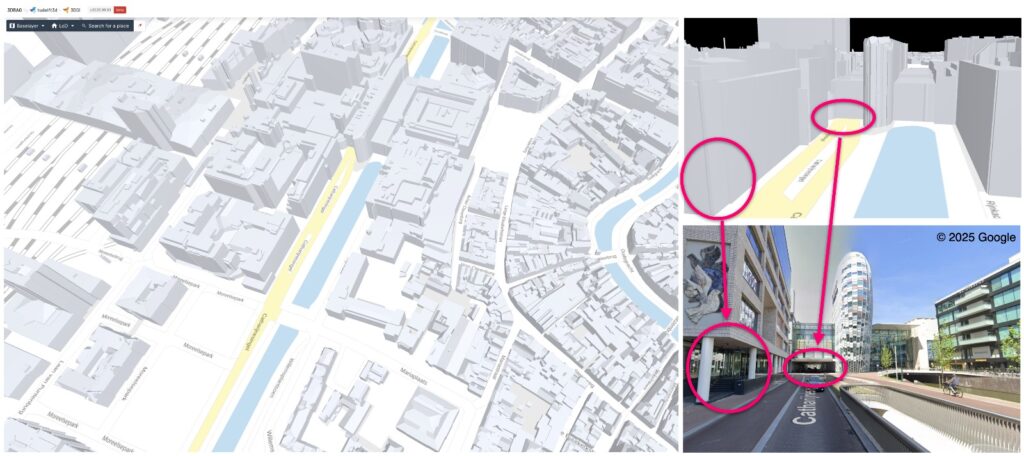 The 3DBAG brings the Netherlands to life in 3 dimensions. With over 10 million digitally reconstructed buildings, the 3DBAG is one of the country’s most comprehensive open datasets. What began as a research project at Delft University of Technology (TU Delft) has become an essential resource for local authorities, researchers, and businesses. Now, thanks to the Innovation Budget, the 3DBAG is set for further expansion.
The 3DBAG brings the Netherlands to life in 3 dimensions. With over 10 million digitally reconstructed buildings, the 3DBAG is one of the country’s most comprehensive open datasets. What began as a research project at Delft University of Technology (TU Delft) has become an essential resource for local authorities, researchers, and businesses. Now, thanks to the Innovation Budget, the 3DBAG is set for further expansion.
Jantien Stoter of TU Delft and Geonovum explains: “The 3DBAG -short in Dutch for 3D Basic Registration of Addresses and Buildings- is a dataset containing 3D models of every building in the Netherlands. We create these models using algorithms that draw on open data. The results are not only visually striking but also highly practical. Local councils use them for urban planning and climate research, helping to shape policies that reflect real-world conditions. Researchers and professionals rely on the data for noise mapping and energy consumption studies. This makes the 3DBAG an incredibly versatile resource.”
Better visibility of canopies
The Ministry of the Interior and Kingdom Relations (BZK) aims to stimulate collaboration and innovation among government organisations through the Innovation Budget (Dutch). This fund is open to all Dutch public authorities, including provinces, municipalities, water authorities, ministries and implementing organisations. The Innovation Budget is currently funding the development of advanced algorithms to improve the visibility of complex building structures.
At present, features such as underpasses and canopies are not clearly represented, which was precisely why the project was submitted for Innovation Budget funding. Stoter explains: “A pedestrian passage or canopy appears closed from the air, even though there is open space beneath it. In the current dataset, these are shown as solid blocks, which can lead to inaccurate calculations. We’re delighted that our project has been selected for the Innovation Budget. Now we can develop new solutions. For example, using oblique aerial photographs or mobile laser scans. This will make the 3DBAG just that little bit smarter.”

Connecting to practice
Participation in the Innovation Budget requires working with open source, which, for 3DBAG, was a given. “Other parties can use, improve and expand our code, which helps to enhance its quality,” says Stoter. “This approach is advantageous. For example, two municipalities and two provinces have developed an open web platform (Dutch) based on the 3DBAG. A developer community has also been established, involving international experts. Because we share knowledge with so many parties, the dataset is becoming increasingly aligned with real-world practice.”
Building together
New insights, improved measurement methods, and technological developments ensure that the dataset continues to improve. But according to Stoter, the 3DBAG will never be finished. “We can create all kinds of smart algorithms, but the quality of the result depends on good source data. That’s why we work with many parties to continuously improve the data. This creates a large network of data and expertise. Thanks to the combination of open data, smart algorithms and close cooperation, the Netherlands is truly at the forefront with the 3DBAG.”
More about 3DBAG
The 3DBAG innovation project is a collaboration between Delft University of Technology (TU Delft), 3DGI, the Ministry of Housing, Spatial Planning and the Environment (VRO), the National Institute for Public Health and the Environment (RIVM), the Netherlands Enterprise Agency (RVO), the municipalities of Utrecht and Amsterdam, the Land Registry (Kadaster), the Dutch Water Authorities (Het Waterschapshuis) and Geonovum. Together, they form the 3DBAG Innovation Platform. Here, government bodies, research institutes and companies work together on the future development of the 3DBAG.




